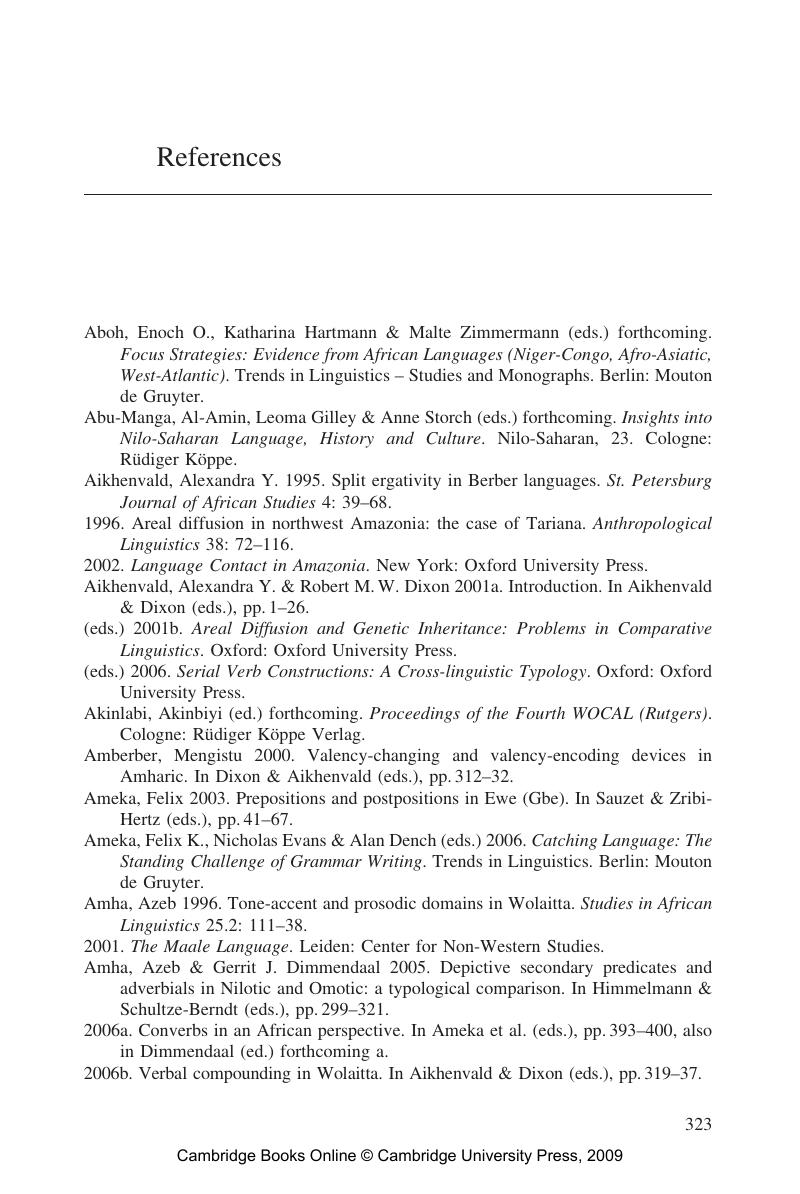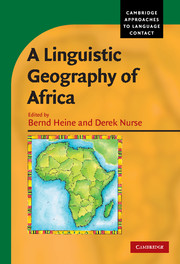Book contents
- Frontmatter
- Contents
- List of maps
- List of figures
- List of tables
- List of contributors
- Series editor's foreword
- Acknowledgments
- Abbreviations
- 1 Introduction
- 2 Is Africa a linguistic area?
- 3 Africa as a phonological area
- 4 Africa as a morphosyntactic area
- 5 The Macro-Sudan belt: towards identifying a linguistic area in northern sub-Saharan Africa
- 6 The Tanzanian Rift Valley area
- 7 Ethiopia
- 8 The marked-nominative languages of eastern Africa
- 9 Africa's verb-final languages
- Notes
- References
- Index
- References
References
Published online by Cambridge University Press: 22 September 2009
- Frontmatter
- Contents
- List of maps
- List of figures
- List of tables
- List of contributors
- Series editor's foreword
- Acknowledgments
- Abbreviations
- 1 Introduction
- 2 Is Africa a linguistic area?
- 3 Africa as a phonological area
- 4 Africa as a morphosyntactic area
- 5 The Macro-Sudan belt: towards identifying a linguistic area in northern sub-Saharan Africa
- 6 The Tanzanian Rift Valley area
- 7 Ethiopia
- 8 The marked-nominative languages of eastern Africa
- 9 Africa's verb-final languages
- Notes
- References
- Index
- References
Summary

- Type
- Chapter
- Information
- A Linguistic Geography of Africa , pp. 323 - 353Publisher: Cambridge University PressPrint publication year: 2007



